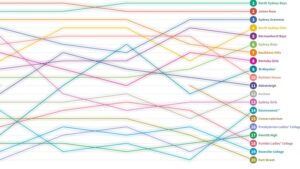
In a perplexing twist, Australians living in the most advantaged areas are more likely to consume alcohol, yet it is those in the least advantaged areas who suffer the most severe alcohol-related harms. This phenomenon, known as the “alcohol harm paradox,” has significant implications for public health policies and educational campaigns aimed at reducing alcohol consumption.
According to recent data, about 31% of Australians residing in affluent neighborhoods exceeded national guidelines for risky drinking in 2022, compared to 22% in less advantaged areas. Despite this, individuals in disadvantaged communities experience higher rates of alcohol-related diseases and injuries.
Exploring the Alcohol Harm Paradox
The disparity in alcohol-related harm has puzzled researchers and policymakers alike. While it might seem logical to attribute the issue to behavioral factors such as drinking patterns or the type of alcohol consumed, studies have consistently shown that these do not fully explain the paradox.
Research from the United Kingdom highlights that individuals in the most disadvantaged neighborhoods are approximately 2.2 times more likely to die from alcohol-related issues than those in affluent areas. This stark contrast underscores the need to look beyond individual behavior to broader social determinants of health.
Behavioral Factors and Their Limitations
Many attempts to address the paradox have focused on changing individual behaviors through educational campaigns. However, these initiatives often fall short, particularly for those in lower socioeconomic groups who may lack access to resources that facilitate behavior change.
While people in wealthier areas can leverage social and material resources to mitigate health risks, those in disadvantaged communities may not have the same opportunities. This disparity can exacerbate health inequalities, as public health messages may not reach or resonate with those most at risk.
Why Educational Campaigns Fall Short
Educational campaigns, such as those promoting the “sober curious” movement, aim to encourage healthier relationships with alcohol. However, these campaigns often fail to engage those most vulnerable to alcohol-related harm.
Participants of higher socioeconomic status found notions of being sober curious resonant, useful, and fitted their lifestyles. But participants of lower socioeconomic status found it “for someone else” and didn’t identify with the concept.
This disconnect highlights the need for a broader approach to addressing alcohol-related inequalities. Policies that focus solely on individual behavior may inadvertently widen the gap between different socioeconomic groups.
Designing More Effective Policies
To effectively tackle the alcohol harm paradox, a shift in policy focus is required. Instead of concentrating solely on individual behaviors, it is crucial to address the social and structural conditions that influence health outcomes.
National policies that reduce alcohol availability across the population, such as limiting the clustering of alcohol outlets in disadvantaged areas and implementing minimum pricing, have shown promise. These measures can help reduce the consumption of cheap alcohol, which is often more accessible in lower-income communities.
Broader Social Policies for Greater Impact
Addressing alcohol-related harm may also require policies that extend beyond alcohol itself. Improving access to housing, equitable workplace policies, and better healthcare can contribute to reducing health inequalities more broadly.
By enhancing the social conditions for all Australians, there is potential for significant improvements in mental health and wellbeing, which could, in turn, reduce alcohol-related harms across different demographics.
Better social conditions for all Australians would lead to improvements in mental health and wellbeing, and this could reduce alcohol-related harms across demographics.
Looking Forward
As research continues to explore the complexities of the alcohol harm paradox, there is hope that more effective strategies will emerge. By focusing on broader social determinants of health and ensuring equitable access to resources, policymakers can make meaningful progress in reducing alcohol-related inequalities in Australia.
If this article raises issues for you or someone you know, call the National Alcohol and Other Drug Hotline on 1800 250 015. Other support is also available.







